Sat on the iconic Bernina Express, the panoramic train that traverses the Swiss Alps from Tirano in Italy to Chur in Switzerland, it’s hard to think of a better way to travel.
“Every season is different, every day is different. Sometimes the rivers have more water, sometimes the mountains have more snow. The colour of the grass and the trees are changing. There’s a lot to see, and it’s worth seeing.”
This is the advice of Joe Bearth, passionate Train Manager aboard our journey on the Bernina Express. As someone who travels regularly working on the various Rhaetian Railway routes, there’s few people who can better encapsulate the experience of a train trip across Europe than Joe.
I’ve been fascinated by European train travel for some time now. A recent and quick trip through Spain from Málaga to Valencia via Madrid did little more than whet the appetite, and I have casually been planning routes I could take around Europe for some time. I had an Interrail pass booked before Covid postponed travel in 2020, and so I decided that 2024 would be the year that I tried it again.
I decided on Interrail for the flexibility and affordability it offered, especially when taking multiple trains in one day. Though my trip was fairly rigid, Interrail makes it really easy to make decisions on the day and activate your pass if you’re happy to travel. It’s because of this that the Interrail pass is often associated with gap-year students travelling around Europe, however it’s also a great option for all ages, including families looking to introduce children to the joys of train travel. I invited my dad and stepmum, Mandy, along for the ride, to explore how easy Interrail was to use, and to showcase the best of Europe in the low season.
Turin
Famously the birthplace of Fiat, Turin is the capital of the elegant Piedmont region of Italy. Through no fault of its own, Turin often gets overlooked in favour of the glamourous neighbouring Milan or the climate in the cities to the south. However, those that make the trip to the region’s capital, easily accessed by train from Milan or Bergamo or via a direct flight to the city’s international airport, will find stunning architecture and strong gastronomy, highlights of which are the local Barolo wine and white truffles.

We started our journey in Turin, arriving in the afternoon after catching an early flight from Málaga to Bergamo, taking the train from Bergamo to Milano Centrale and then from Milano Centrale to Turin. Seat reservations were only needed on the Milano Centrale to Turin high-speed line at 15 euros per person, and the first class coach on this Frecciarossa train was fantastic, with luxuriously comfortable seats and wine and biscuits handed out along the 50 minute journey.
We spent time in Turin searching for the street and apartment that my mum and dad stayed in when hitchhiking around Europe some 40 years ago, and even had an unlikely reunion with an old friend from the city. A day of rain made exploring more difficult but we still saw plenty of the city in between stints inside drinking wine or eating fantastic food. We particularly enjoyed the cosy Caffetteria Cairoli, a small living room-style restaurant located off Via Po popular with locals and serving a limited but delicious home-cooked menu and local wine.
Other highlights of Turin include the Egypt Museum, the second most important collection of Egyptian artefacts after the Egyptian Museum of Cairo; the Mole Antonelliana, an unmissable emblem of Turin which houses the national film museum; and on the second Sunday of every month, the famous Balon Flea Market in Porta Palazzo, where you can enjoy vintage finds before heading to the neighbouring indoor food market. A short tram ride to nearby Lingotto is a must for fans of the automobile industry, as an old Fiat factory has been redesigned into a multi-use venue whilst retaining an original car test track on the roof. Architecture enthusiasts will enjoy important baroque buildings in the city centre such as Palazzo Reale and Palazzo Madama, set within the sprawling Piazza Castello.
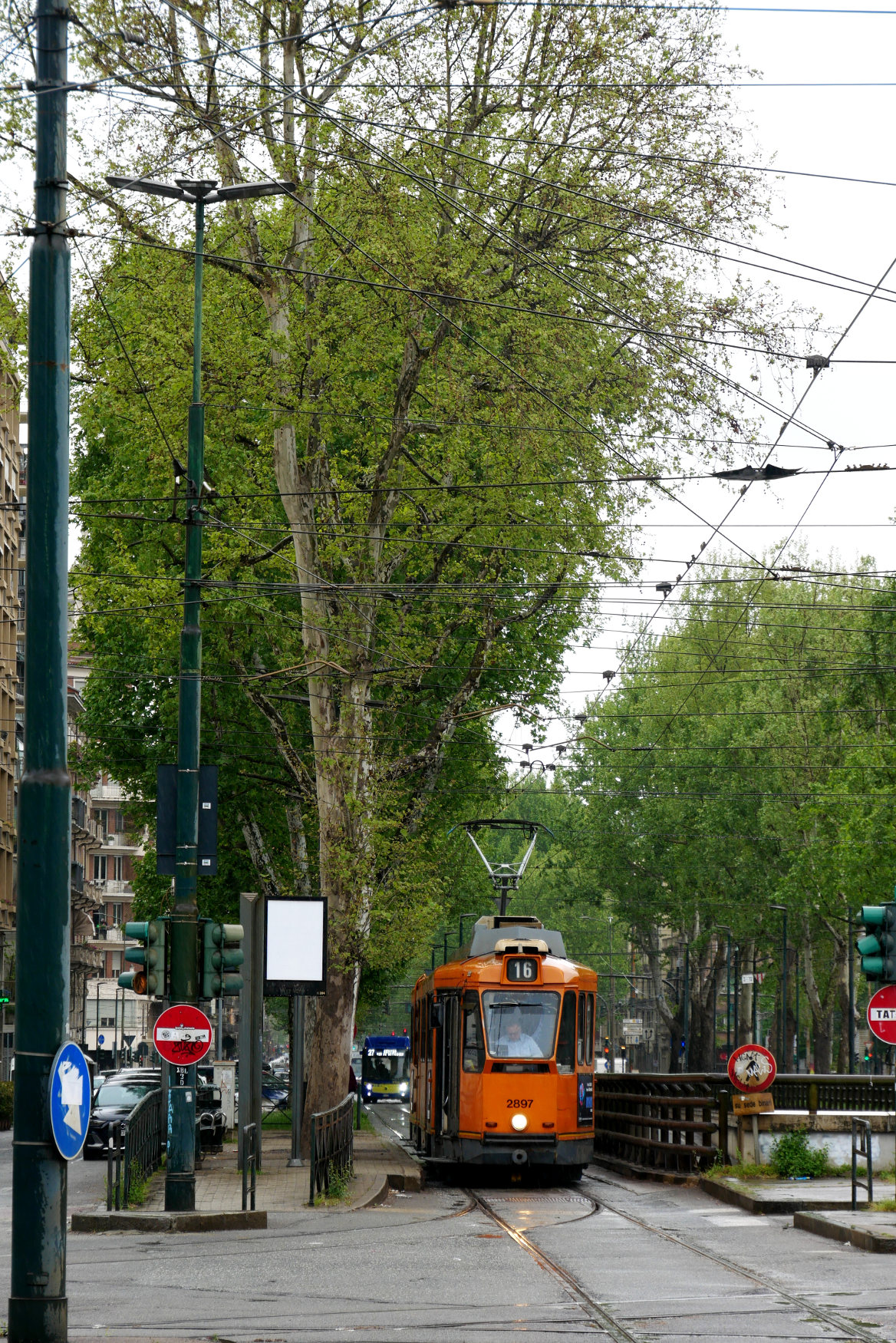
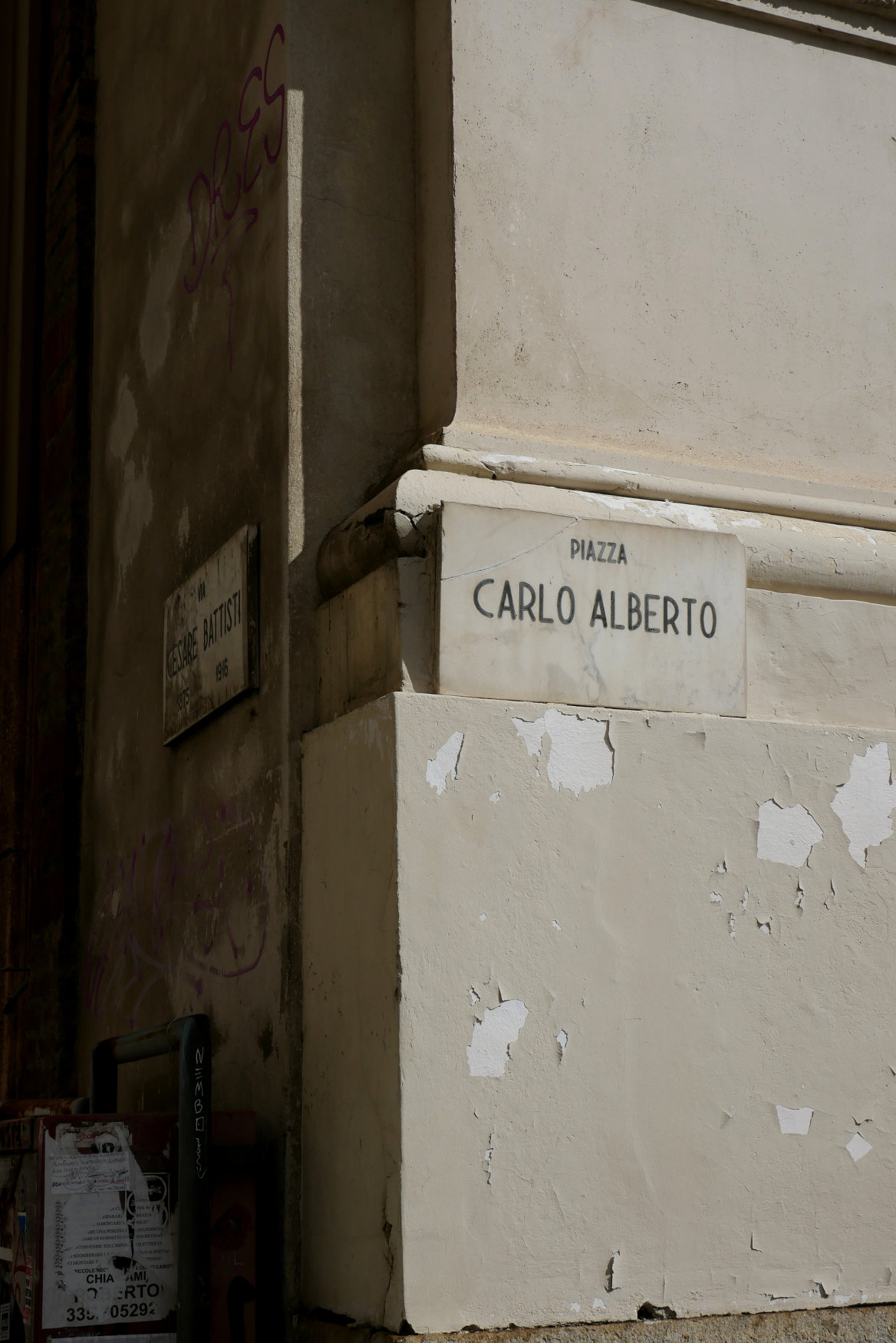
Bernina Express
Following our stay in Turin, we took the 4-hour trip to Tirano, via Milan, to catch the iconic Bernina Express across the Swiss Alps. Operating between Tirano and Chur, the Bernina Express has been in operation for around 50 years. Boasting the highest set of tracks in Europe and the steepest in the world, the Bernina Express traverses almost 200 bridges and goes through 55 tunnels on a truly once-in-a-lifetime journey.
We took the 14:24 train after grabbing lunch and supplies in the small town of Tirano, which is well worth taking an hour to explore. We booked seat reservations in the 1st class panoramic carriage, which cost around 30 euros per person with the Interrail pass, and offered huge windows in the cabin so that you don’t miss a moment of the spectacular journey. Our Train Manager Joe looked after us along the way, taking time to chat with all of the passengers, and point out all of the sights and attractions as we passed through small towns and villages, open countryside, and landscapes thick with snow on the 4-hour trip.
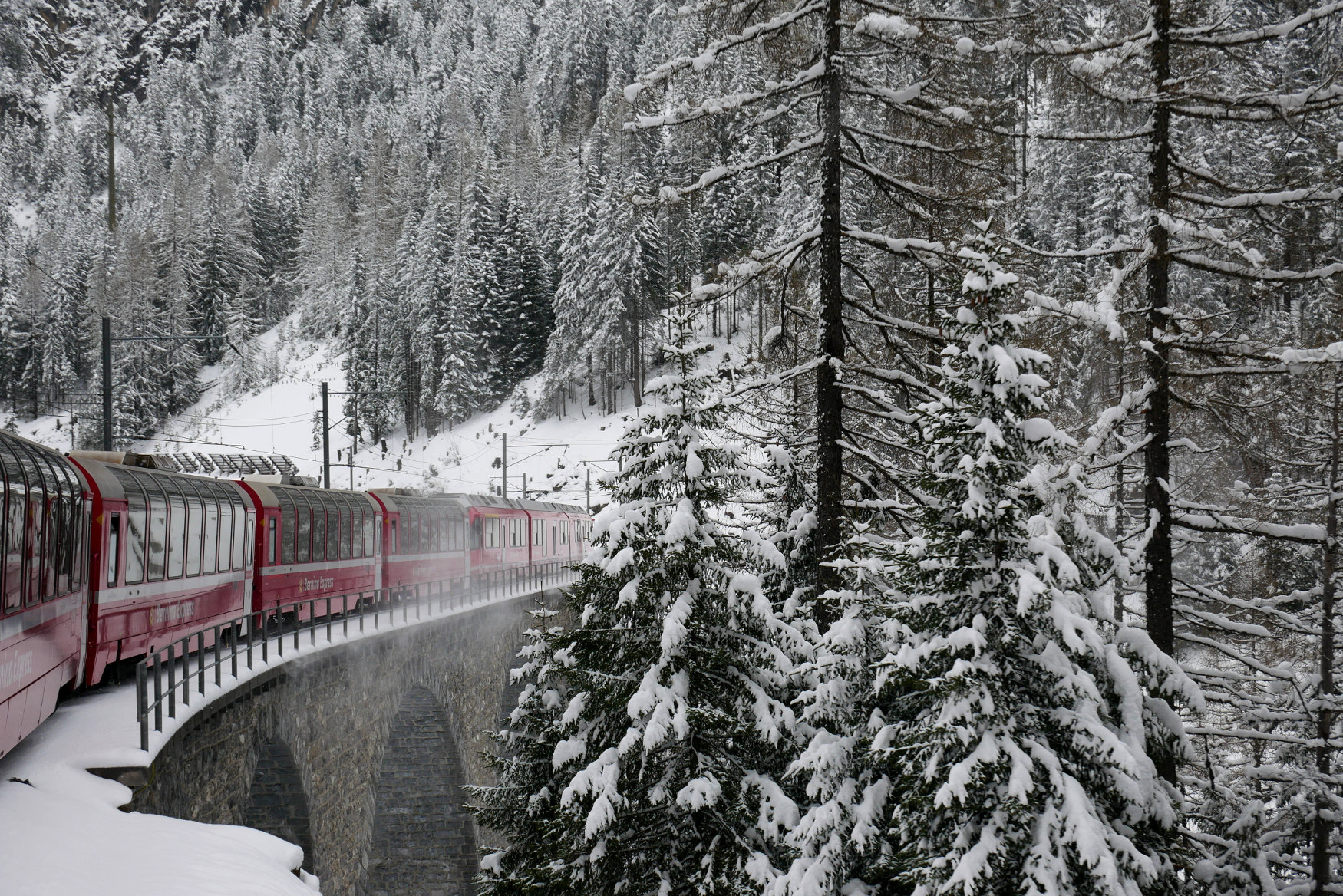
Zürich
We arrived in Zürich after taking a short train journey from Chur, the final destination of the Bernina Express. An eminently walkable city, Zürich is located on the banks of the eponymous Lake Zürich, and many of its famous landmarks, museums, and galleries can be found in District 1, which lies either side of the river and includes the city’s old town.
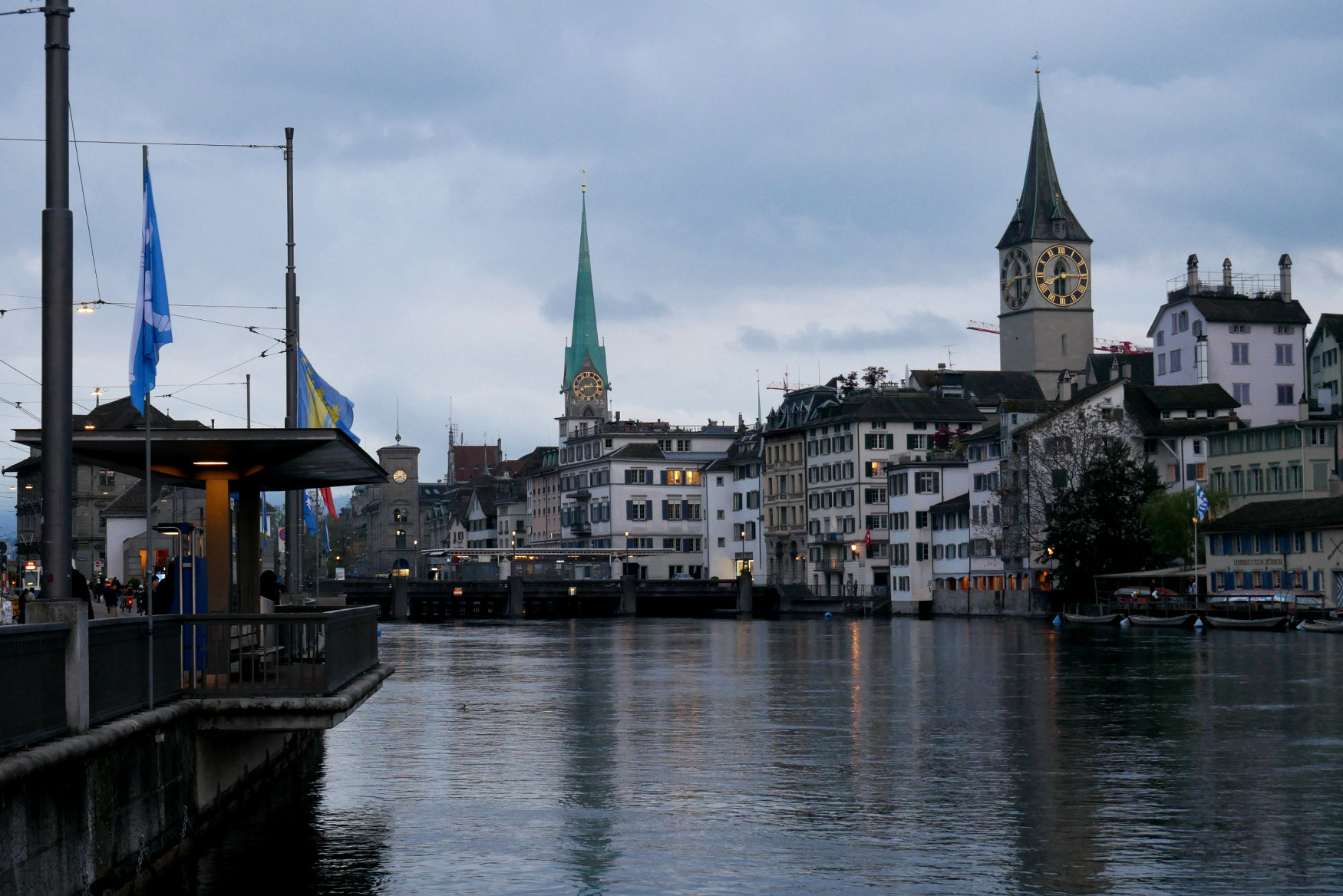
We were lucky to stay in a large apartment in the old town, which meant that we could easily explore the main sights during the short stay in the city. An easy circular route from either side of the river takes in sights including the trio of The Church of St. Peter, Fraumünster, and Grossmünster with their iconic clocks, towers, and spires. On the banks of Lake Zürich, a sculpture of Ganymed, framed with the great expanse of the lake behind, is a favourite place to sit and appreciate the views. A short walk through parkland down the banks of the lake takes you to the serene Chinese Gardens, a gift from Zürich’s twined city of Kunming, in China’s Yunnan province. Make sure not to miss a walk to Lindenhof, a historically significant area of the city that now provides an excellent viewpoint over the city, as well as a meeting point for chess-enthusiasts who play on huge chessboards in the park.
Though Zürich’s bars and restaurants are known for being expensive, drinking in public is legal here, so to save some money you can purchase a drink from the supermarket and join the locals sitting along the shore of Lake Zürich. However, if you’re determined to head out for food, don’t miss the local staple of cheese fondue and bread from places such as Adler’s Swiss Chuchi Restaurant. Münsterhof square, located beside Fraumünster, is a great place to grab a coffee or glass of wine and sit in the sun, or to cosy up under one of the blankets provided.
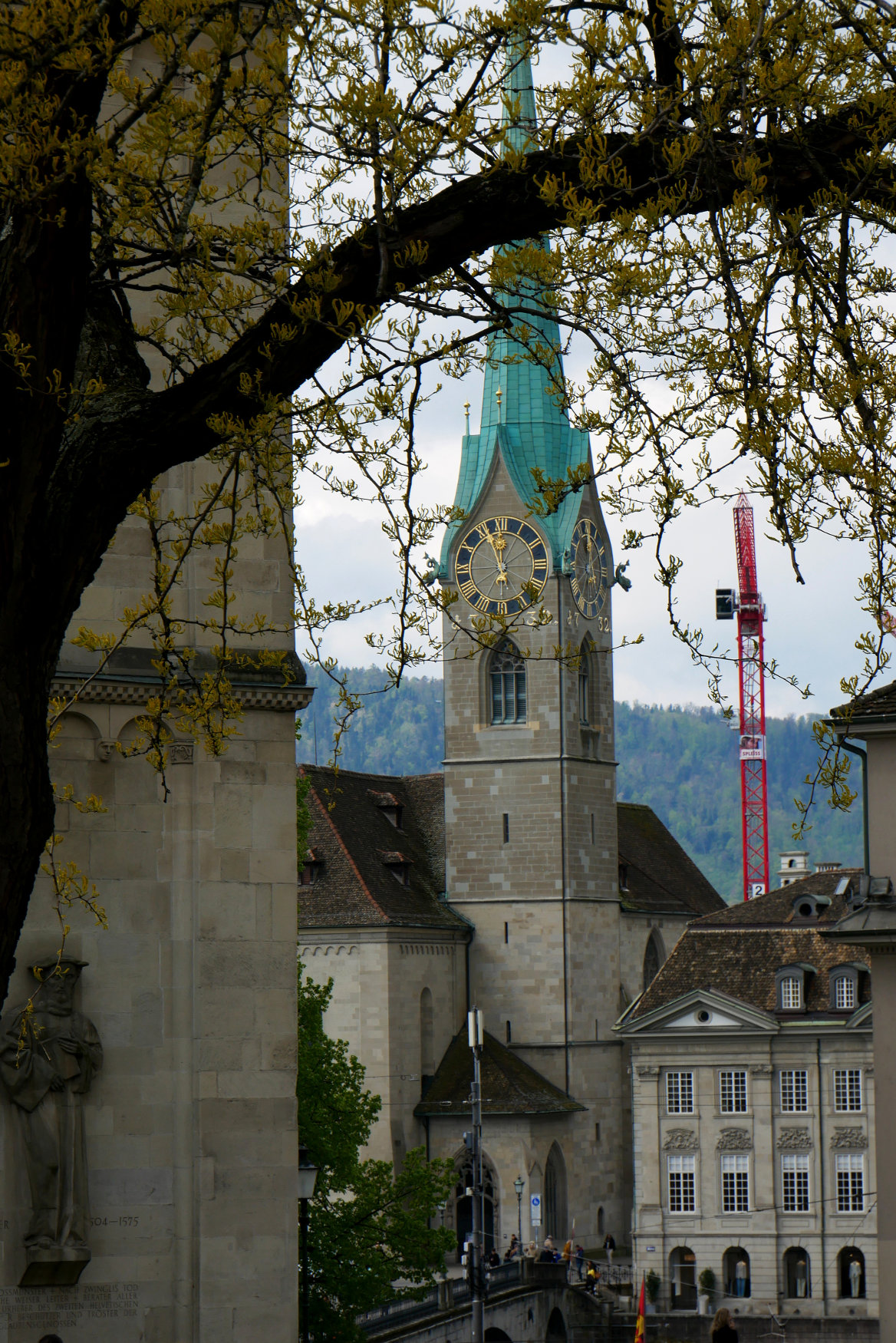
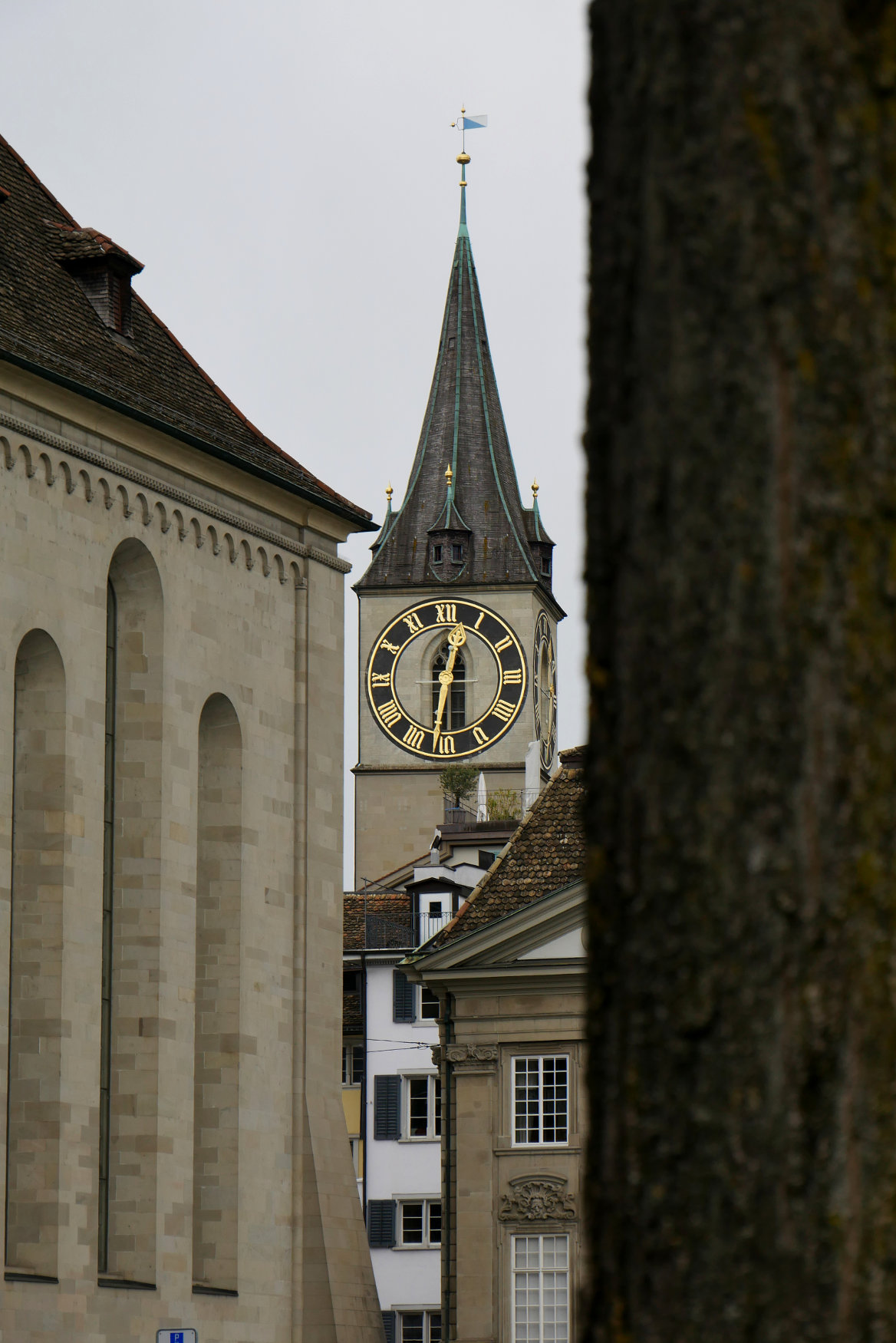
Zürich to Vienna
We booked a reservation on the almost 8-hour journey between Zürich and Vienna in the first class cabin, at a supplement of just €3 per person. Departing from Zürich’s main station at 12:40, we had a final walk around the city centre and grabbed a coffee and some supplies for the train, before finding our coach and boarding.
After the spectacular sights along the Bernina Express that we’d experienced just a few days prior, we were worried about being underwhelmed by the longest train journey that we had booked. However, the trip was another memorable one, passing through Switzerland, Liechtenstein, Germany, and Austria, and through gorgeous green countryside, small towns and villages, large cities like Salzburg and Innsbruck, and even passing through snow as it trundled alongside the imposing Alps.
We purchased food and drink on board, including Schnitzel, soup, and Austrian lager, which we could either eat in the restaurant cabin or have delivered to our table. The first class coach was comfortable through the whole journey, and fairly quiet despite not being the dedicated quiet cabin. As the sun was setting at around 8:30pm, we arrived in Vienna.

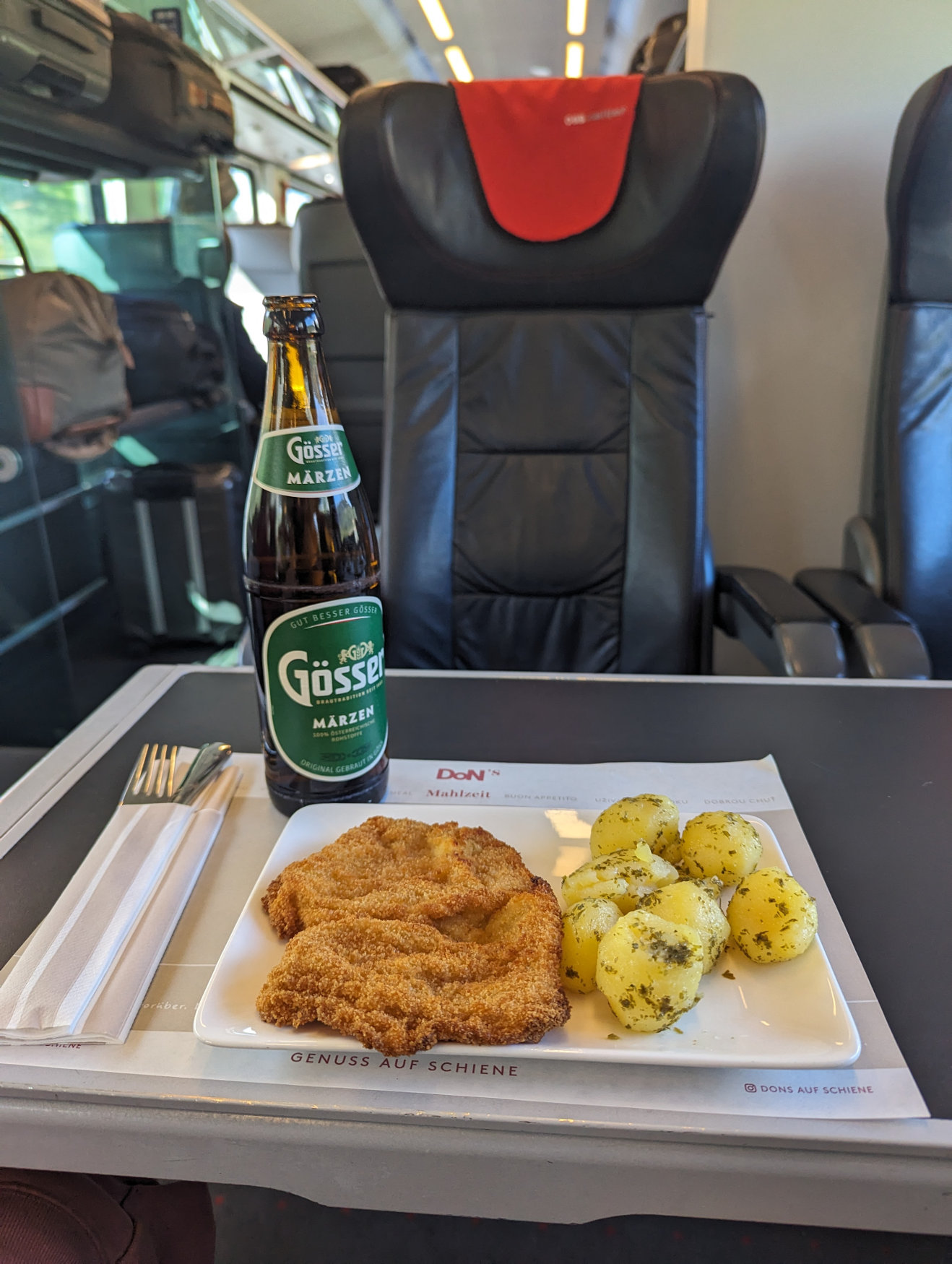
Vienna
Despite researching the city before visiting, we were blown away by the elegance and grandeur of the city. Thanks to its strategic location in Europe and on the River Danube, a home of the Habsburg dynasty, and a period acting as capital of the Holy Roman Empire, Vienna is a city of huge cultural and political importance.
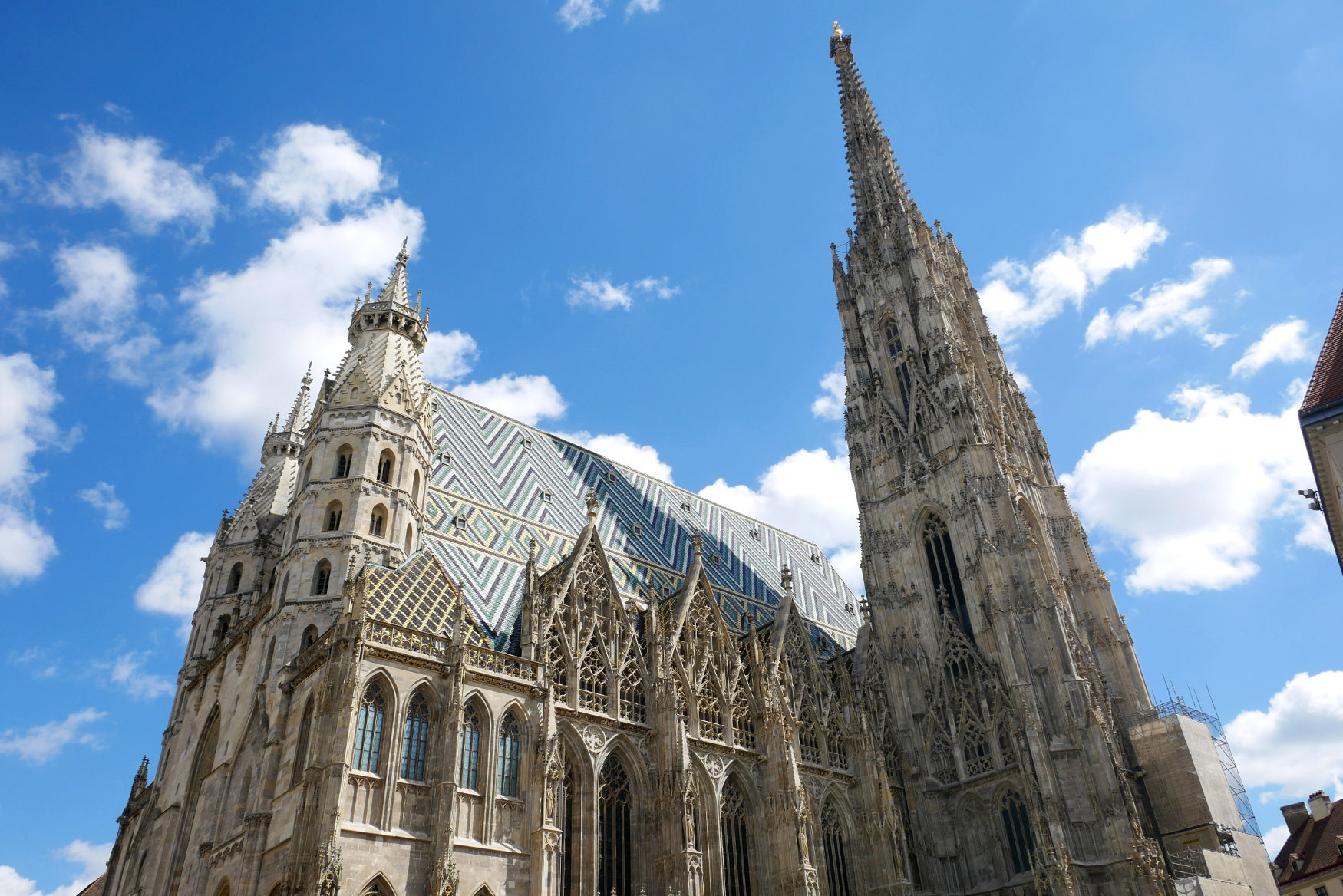
Coffeehouse culture has undoubtedly been a staple of life in Vienna for some time, and famous names from Beethoven to Freud have been known to have frequented cafés in Vienna. The culture remains strong to this day, and there are many cafés across the city where you can enjoy what has been awarded an intangible cultural heritage by UNESCO. Café Central is perhaps the most famous, though we opted for the 120 year-old Café Prückel, with its 1950s interior, tuxedo-clad waiters, and homemade pastries.
The wealth of the city is highlighted is some of the city’s most notable architecture, including the neo-Gothic 19th century Votivkirche; the huge town hall set in Rathausplatz; the Greek-style Austrian Parliament Building, fronted by a statue of Athena; and The Hofburg, a former imperial palace of the Habsburg dynasty. One of the city’s most important landmarks is St. Stephen’s Cathedral, built on the remains of a 12th century church and with its recognisable multicoloured, tiled roof.

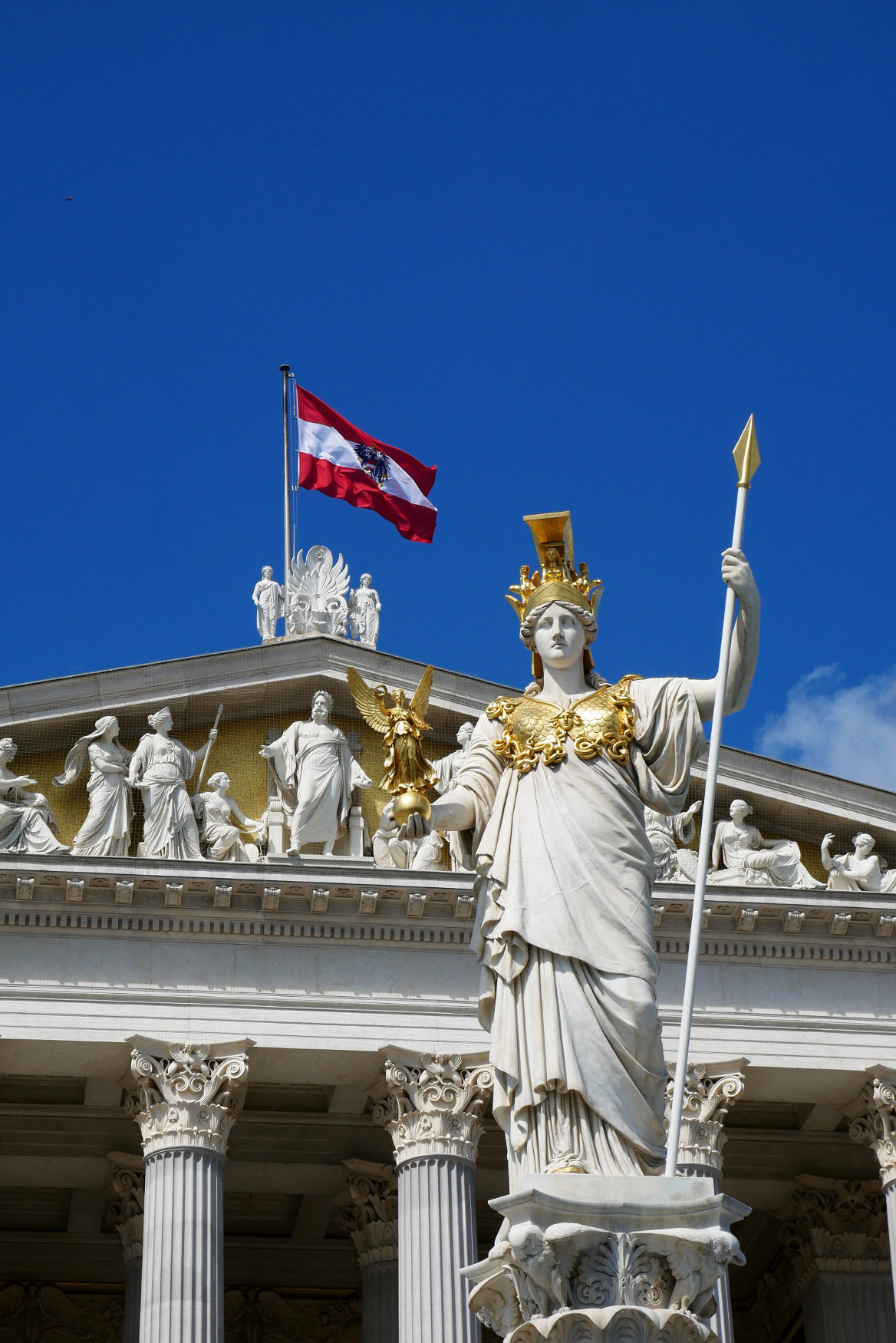
After exploring some of the city’s architecture we stopped in Salm Bräu, a brewery located south of the city centre in what was once an 18th century vineyard and wine cellar before becoming a convent. We sat in the sun in the courtyard whilst sampling their own beer, specialty breads, and hearty food, though a seat in the extensive interiors looked just as interesting. Neighbouring Salm Bräu is the Belvedere Castle, originally constructed as a summer residence for Prince Eugene of Savoy and now housing a museum.
Bratislava
Just a short 1-hour train ride from imperial Vienna is Slovakia’s capital of Bratislava. A thriving city sitting on the banks of the Danube, the city sits as an ideal bridge between Eastern and Western Europe. After catching a taxi from the train station to our apartment on the top floor of a block to the east of the city, we headed into the charming, car-free old town. Temperatures were great for mid-April, with clear blue skies and mid-20 degrees Celsius, which made for perfect conditions to explore the city.
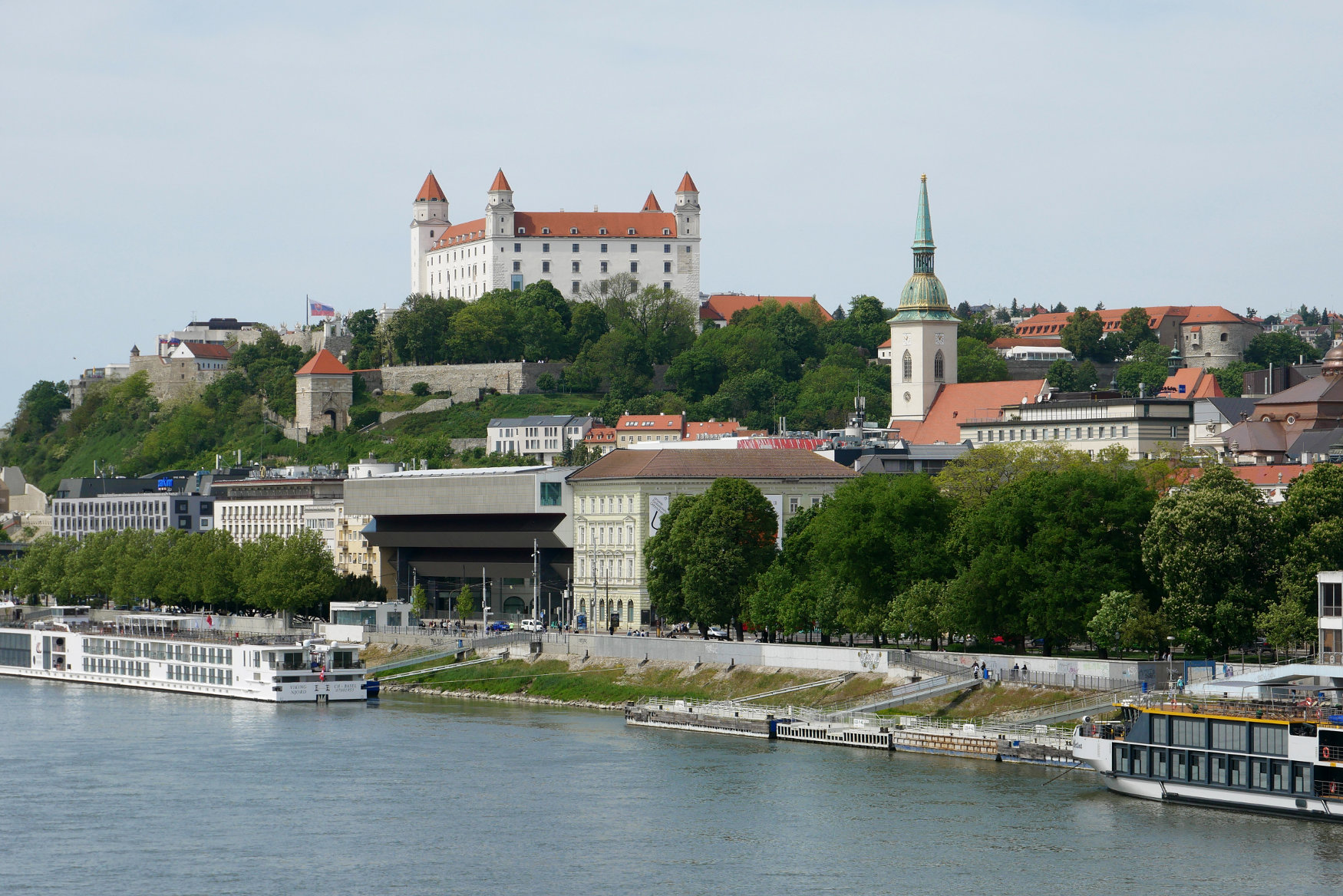
Our first stop was the city’s famous Church of St. Elizabeth, better known as the ‘Blue Church’, built in the early-1900s. In the old town, Michael’s Gate is the only remaining feature of the Mediaeval fortifications of the city, whilst in the main town square you can find the Old Town Hall and 16th century Maximilian’s Fountain. One of the most striking landmarks in the city is Bratislava Castle, which has overlooked the Danube and the old town for centuries. Recently undergoing significant restoration, the castle now houses Slovak National Museum exhibits and the grounds provide a fantastic view over the city and of the famous St. Martin’s Cathedral, where a number of royals from the Habsburg Dynasty were crowned. Make sure not to miss the two famous statues of Cumil, a sewage worker resting on a manhole, and Schöne Náci, a local street character, whilst exploring the old town.
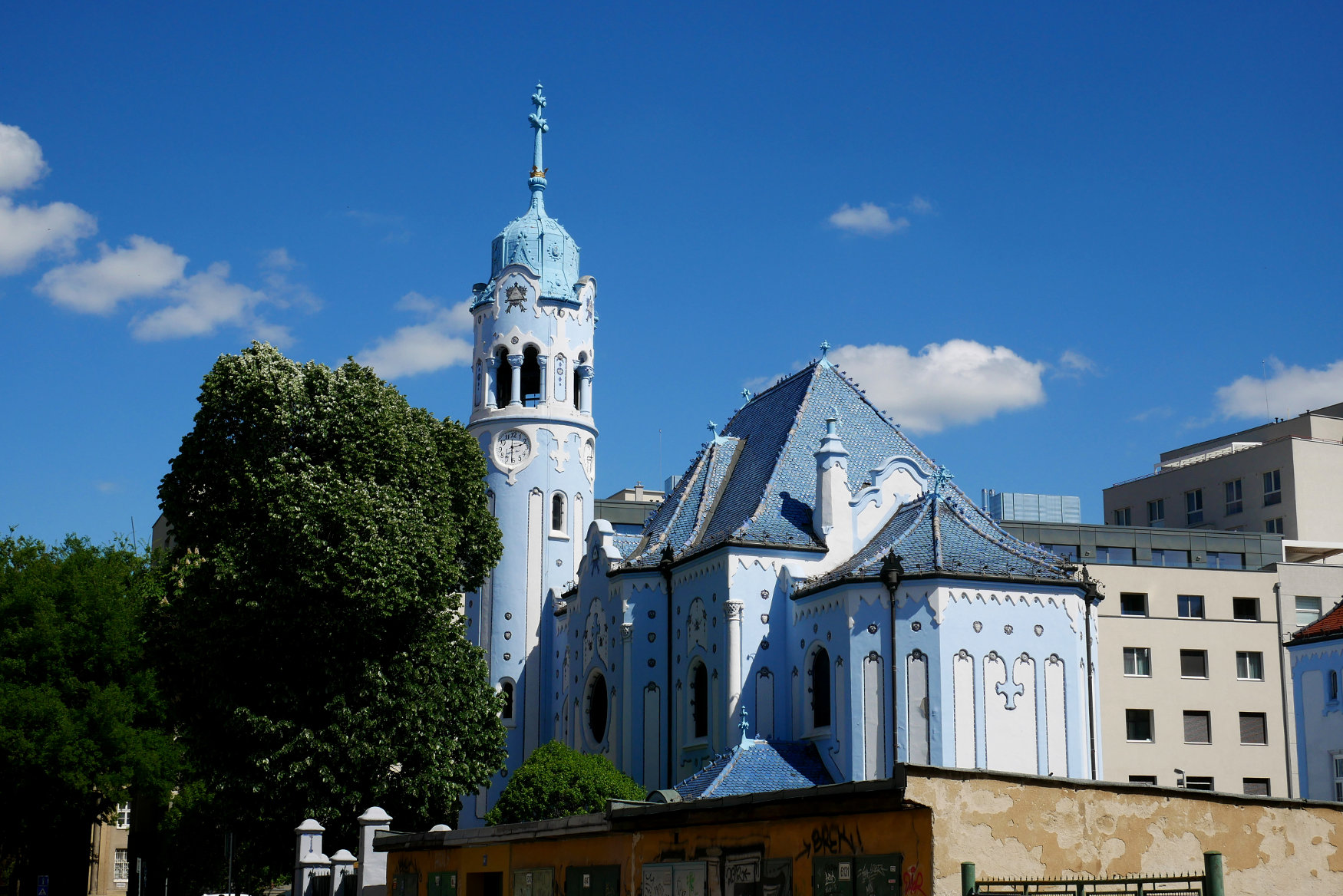
Food and drink is extremely affordable in Bratislava and the beer culture is strong, with a range of local and international beers costing around €2.90 and several places offering tasting flights. There are plenty of places to eat in the old town, with traditional Slovak food popular. Head through the streets of the old town or wander down the tree-lined square in front of the Slovak National Theatre for a range of bars and cafés.
I left my dad and Mandy early in the morning on our final day in Bratislava, as they were catching an earlier flight from Vienna which was a couple of train rides away from the city. I spent the morning wandering along the Danube where I sat in the shade of Most SNP, the main bridge from the old town topped with a panoramic restaurant and observation deck. In the afternoon I ate and drank my way through the old town before taking a short taxi ride to Bratislava Airport.
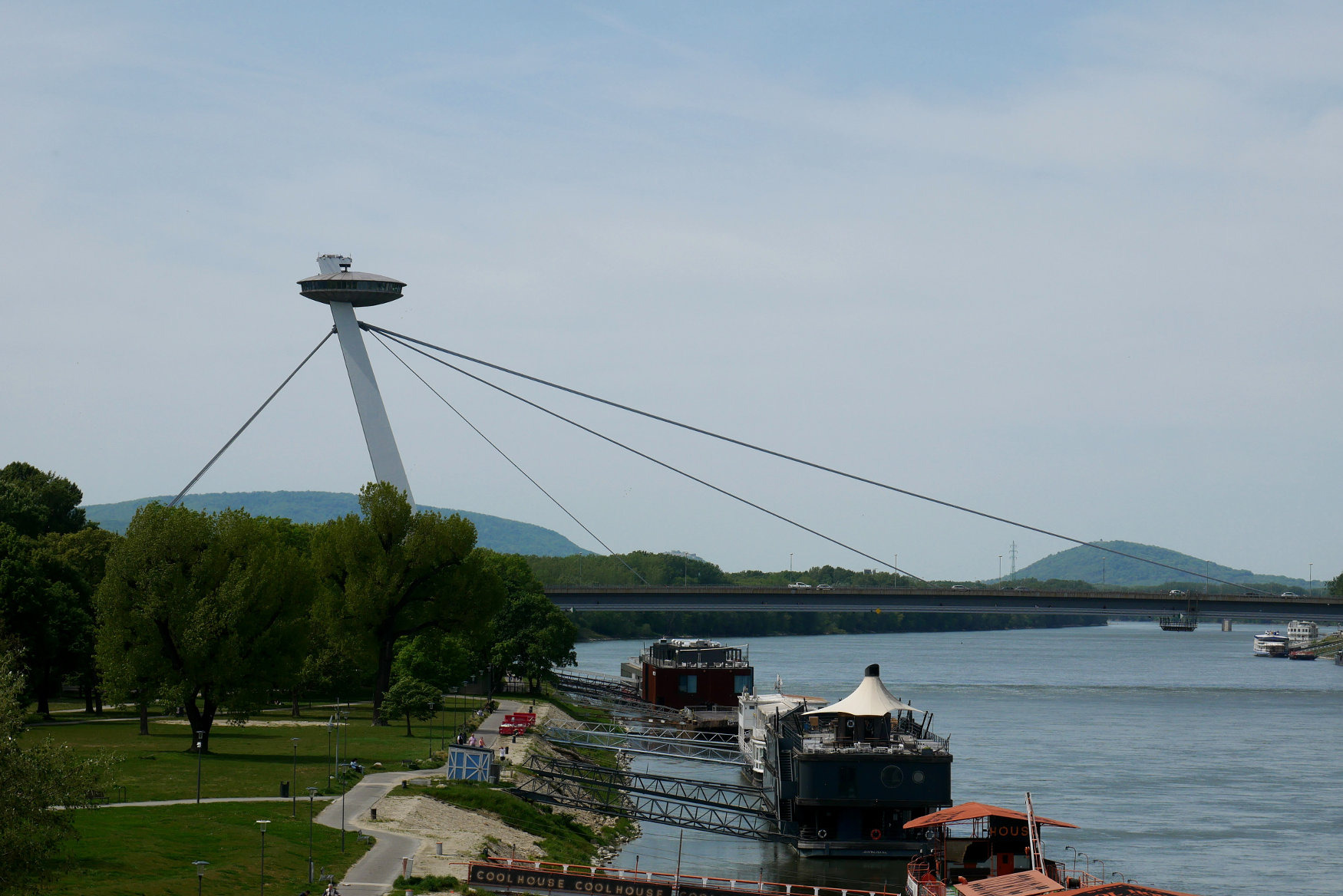
As I stood for over an hour in Bratislava Airport, waiting for my uncomfortable low-cost flight, I thought back to Joe’s words as we were ambling in comfort over the Swiss Alps. There really is so much to see, and travelling by train truly gives you the opportunity to see it all.
This article first appeared in Issue 8 of the Low Season Traveller Magazine.



